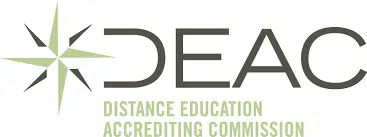How Should Teachers Give Instructions?
Join a global community of over 200,000 TEFL teachers working throughout the world! Enrol me!
Instructions may seem like a small and trivial part of an English as a Foreign Language lesson. But they are extremely important.
An EFL lesson is mostly a series of exercises, activities and games which are linked to form a cohesive and effective EFL lesson.
It’s important for EFL teachers to be able to give good, clear instructions in order to ensure that all the activities run smoothly during the lesson. When you consider that your students might not understand a lot of what you’re saying, giving instructions is actually not as simple and straightforward as you may think.
So let’s take a deep dive into teachers’ instructions.
Right, first we’re going to look at this worksheet. Can you see this worksheet? Okay what do you think the first answer is? Question 1, oh no wait, sorry Question A. Tom? Sarah? Who wants to answer? Does anyone know? Actually why don’t you talk to each other in pairs and then we can discuss the answers? Talk to each other. Tom, do you want to talk to Leo? Or Ricardo? Doesn’t matter really. Write the answers down, or just talk to each other, or you can tell me. I’ll give you 2 minutes. No, make that 3. Or I’ll see how long it takes you. Okay, so remember to write the answers down.
Any idea what just happened? No, and the students probably didn’t either.
Let’s talk about good instructions and how we can make sure we use them.

Keep them short
Instructions should be short and sweet.
Look at Exercise 1. You need to fill in the missing words. Write only the words. When you’re finished, check your answers with a partner.
Think about what the vital information is and relay that and only that. Cut out any extra information or sentences; only say what is necessary.
When you think about it, your students are trying to process everything that comes out of your mouth. So when you say in 5 minutes what you could say in 1, that’s a lot of extra processing that your students need to do – and that’s before they’ve even started the activity!
Keep your language simple when giving instructions. Keep your sentences short and don’t use overly complicated vocabulary.
The aim of the lesson is not for the students to understand your instructions but to learn and practise language – this is accomplished through understanding and carrying out the activity, not the instructions!
Repeat repeat repeat
Don’t only give the instructions once. Once you have given the instructions, give them again. And again!
So we’re doing Exercise 1. Fill in the missing words. Do it by yourself, then check your answers with your partner.
The first time your students will be trying to interpret what you say so they might not comprehend everything they need to know.
Repeating your instructions gives them time to process the information to make sure they are receiving all the information.
It’s very easy to miss a step and when it comes to accomplishing a task, missing a step can derail the whole process.
It’s better to go slowly rather than rush.
Sometimes if we are running out of time for an activity we can be tempted to rush the instructions so that our students have more time to spend on the activity.
But if your students don’t understand your instructions properly and do the activity wrong, you’ll have to explain everything again anyway. Rushing instructions isn’t going to save time.

Give an example or demonstration
While you are giving the instructions, demonstrate them with hand gestures. Even do the instructions yourself as you are saying them. This might mean doing a demonstration of the activity with a student, or as a class.
Let’s look at a) together. “John wakes (blank) at 7am.” What is the missing word? On? No. In? No. Up? Yes. “John wakes up at 7am.” So you need to write the word “up” for a). Only “up”.
Once you have completed your instructions, your students should have a verbal and a visual idea of what is expected of them.
It can help to use a student to model the activity. This gives the students even more time to process the information. This will also give them a linguistic model of what they need to do.
Use the same terminology
Often our activities in lessons will involve similar instructions as previous activities.
Using the same terminology or the same manner of communicating instructions helps your students get to know your language usage. They are then better able to interpret the instructions.
As your students get to know you they will become more familiar with your instructions, as long as you use the same instructions again and again.
Take a moment now to think about how you could demonstrate or word the following instructions:
Work in pairs.
Write the answers down.
Discuss in groups.
Mingle.
Can you say that again?

Check instruction comprehension
Once you have given the complete instructions, ask one of your students to repeat back the instructions to make sure they have understood what needs to be done.
Eduardo, can you tell me what you must do now? You must finish Exercise 1, right. What will you write down? Words, correct. When you have finished, who will you talk to? Your partner. Show me who your partner is.
Sometimes, checking instructions can be just as important as giving instructions, as this will show you if your instructions were unclear.
For example, if the student repeating back the instructions is not entirely sure of what needs to be done, you can be sure that other students are in the same position. This means it’s necessary to run through the instructions again.
Checking instruction comprehension is done through the use of instruction-checking questions, or ICQs (not to be confused with concept-checking questions, or CCQs).
ICQs are simple questions which help you determine whether or not your students have understood what they are expected to do. ICQs have short answers and should not be complicated.
For example:
Should you write this down?
Must you write the whole sentence or just the missing words?
Are you working in pairs or by yourself?
How many questions must you do?
What must you do when you’re finished?
Read more: English teachers, are you asking the right questions?
Instructions are essential to the success of your lesson, but it’s essential that you’re successful with your instructions.
Instructions may be the last thing teachers think about when planning an EFL lesson, but they shouldn’t be.
Instructions can make or break an activity.
There is nothing worse than having an amazing activity which then flops because your students have no idea what to do. Or to spend more time giving instructions than actually doing the activity.
Spending a few minutes before the lesson considering the instructions that need to be given is essential in ensuring a smooth, fluid lesson.
With more experience and the more often you do activities, you will find your instructions become better and more natural so that soon you won’t even have to think twice about giving good, clear instructions.
Please note: This post was originally published on 21 November 2017 but has been updated.
Accreditation Partners
The TEFL Academy was the world’s first TEFL course provider to receive official recognition from government regulated awarding bodies in both the USA and UK. This means when you graduate you’ll hold a globally recognised Level 3 (120hr) Certificate or Level 5 (168hr) Diploma, meaning you can find work anywhere and apply for jobs immediately.

 United States
US
United States
US












